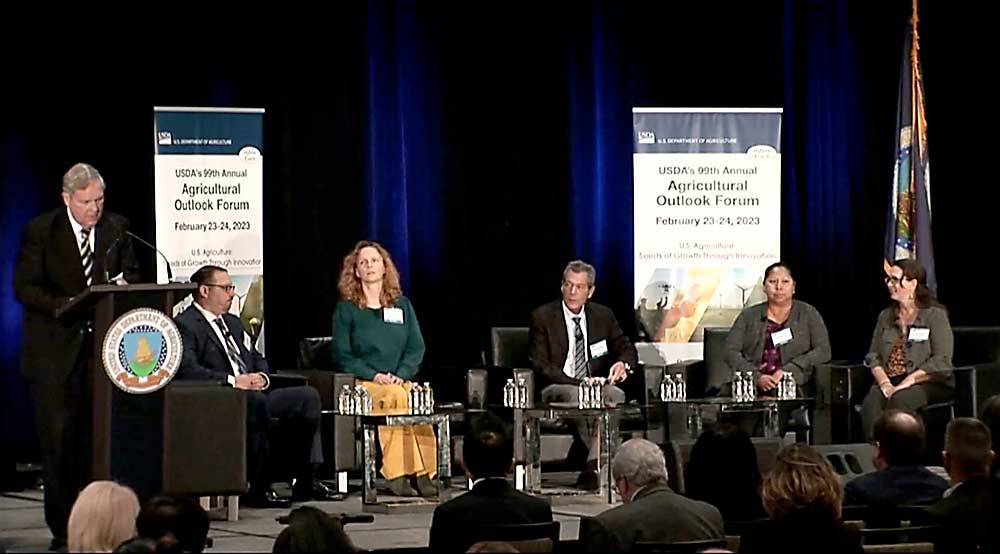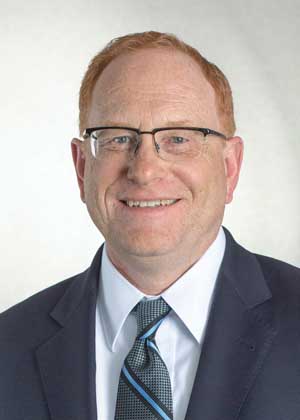
Ines Hanrahan, executive director of the Washington Tree Fruit Research Commission, discussed grower efforts to automate in the face of labor shortages in a panel discussion moderated by U.S. Secretary of Agriculture Tom Vilsack.
Hanrahan was one of four panelists for the session titled “Workers and the Workforce: Essential Contributors to American Agriculture” during the U.S. Department of Agriculture’s annual Agricultural Outlook Forum in late February in Arlington, Virginia.
The forum, first held in 1923, also featured presentations by USDA chief economist Seth Meyer, 30 breakout sessions and more than 100 speakers from government, industry and academia. In 2022, more than 6,000 people attended virtually, according to the USDA.
Hanrahan used the opportunity to invite Vilsack to visit Washington’s orchards someday and encouraged him to endorse low-interest government loans for growers looking to adopt expensive technology.
“If you ever want to come and visit us and see what we’re doing, you’re welcome,” she said.
Calling Washington growers “forward-thinking,” Hanrahan gave a brief history of the 50-year-old research commission and its original purpose to foster automation technology.
“Growers kept on pushing,” she said.
She also discussed recent research efforts to build robotic harvesters, the development of the WA 38 apple and the use of platforms to replace ladders on farms.
Hanrahan shared the panel with Jon Esformes, CEO of Sunripe Certified Brands and chief operating officer of Pacific Tomato Growers; Zachariah Rutledge, a Michigan State University extension economist; and Lupe Gonzalo of the Coalition of Immokalee Workers, a food industry labor-rights group in Florida.
In a follow-up interview with Good Fruit Grower, Hanrahan called the forum (viewed by agriculture, food industry and government officials throughout the world) a chance to highlight issues from a section of the farm economy that, as a specialty crop, may be overlooked.

Mark Powers, president of the Northwest Horticultural Council, agreed.
“The USDA Outlook conference is traditionally targeted at the non-specialty-crop agricultural sector audience,” said Powers, who attended the conference. “To have a representative of the tree fruit industry on the same stage as the U.S. Secretary of Agriculture is an important acknowledgment of the diversity of U.S. agriculture and the need for USDA to be more inclusive in its approach to all of U.S. agriculture.”
Hanrahan shared the suggestion about loans to offer solutions to officials, not just problems, she said.
“If you present reasonable solutions, they’re willing to usually listen and engage,” she said.
Up-front cost is one of the biggest barriers for growers to adopt new technology; loans might lower that hurdle for growers and help the startups scale up, she said.
Meanwhile, Vilsack seemed receptive to the idea of visiting Washington, even when she asked him about it later, she said.
“I’m hopeful he’s coming,” she said.
—by Ross Courtney






Leave A Comment